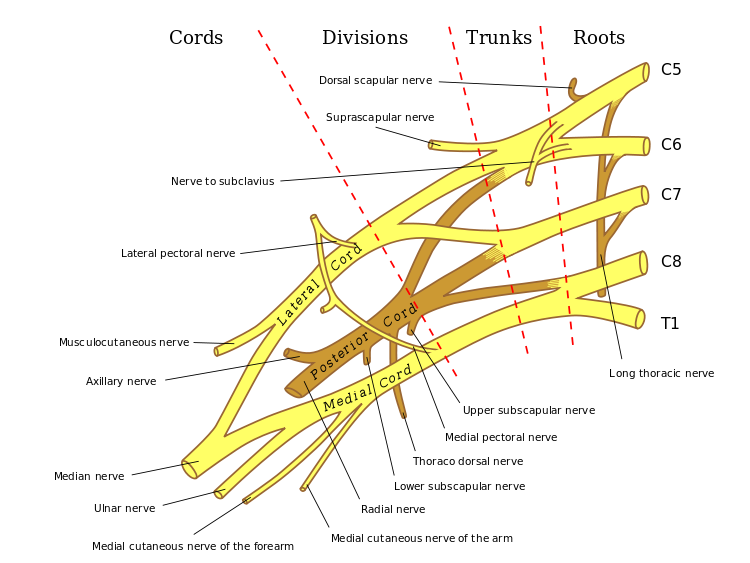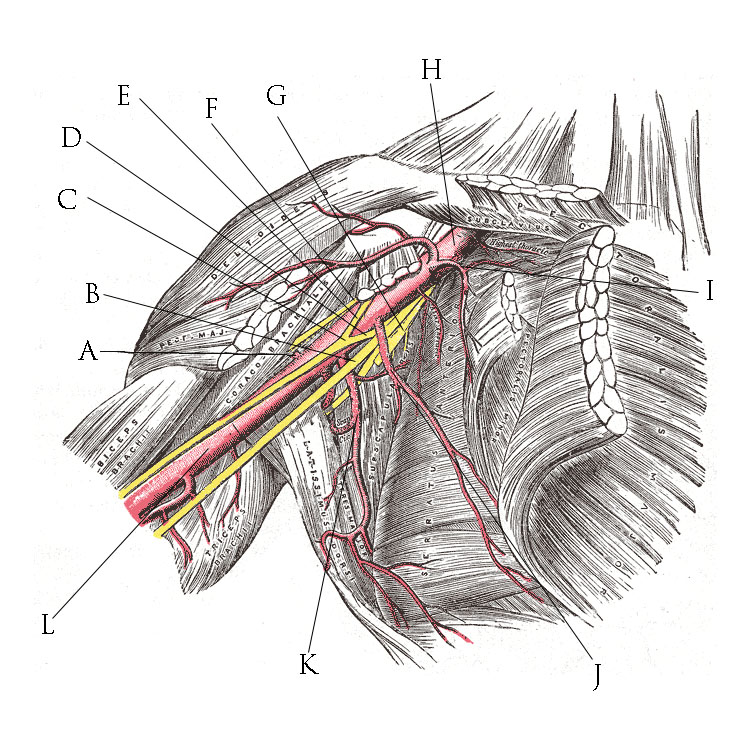Scottish National
BRACHIAL
PLEXUS
INJURY
SERVICE
Specialist multidisciplinary integrated management, assessment, surgical reconstruction and rehabilitation for brachial plexus injury in Scotland and the UK
The brachial plexus is a complicated network of nerves which controls the muscles in the shoulder, arm, elbow, wrist, hand and fingers, as well as providing them with feeling.

It starts as five large nerve roots which come out of the spinal cord between the bones in the neck (vertebrae) and are named after the vertebrae they pass using letters and numbers: C5, C6, C7, C8, T1. The nerve roots mix together in the neck and then divide into many important branches as they run under the collarbone, into the armpit and along the length of the arm.
The nerve roots that eventually go to the shoulder and elbow (C5 and C6) lie higher in the neck than those that travel to the hand and fingers. The upper ones (C5 and C6) are those most commonly affected in a brachial plexus injury.
Surgeons and therapists can work out which nerve roots were injured by examining the pattern of weakness that a patient has and by checking what weakness they had when they were injured.

Nerves can be seen with the naked eye and are cord-like structures formed from a collection of nerve fibres which are too tiny to see without a microscope. Similar to a telephone cable which contains lots of wires a single nerve may contain thousands of nerve fibres. The whole brachial plexus contains about 425,000. These fibres carry electrical messages both ways between the brain, muscles and tissues. The fibres will stop working if they are bruised or stretched, or if they break.
For a muscle to work (contract) a message must travel from the brain along a nerve that goes directly to the muscle. When a nerve is injured the muscles that the nerve controls will be weakened, even though the injury is not to the muscle itself.
Nerves outside the spinal cord may be able to repair themselves after injury. This depends on how bad the damage is.